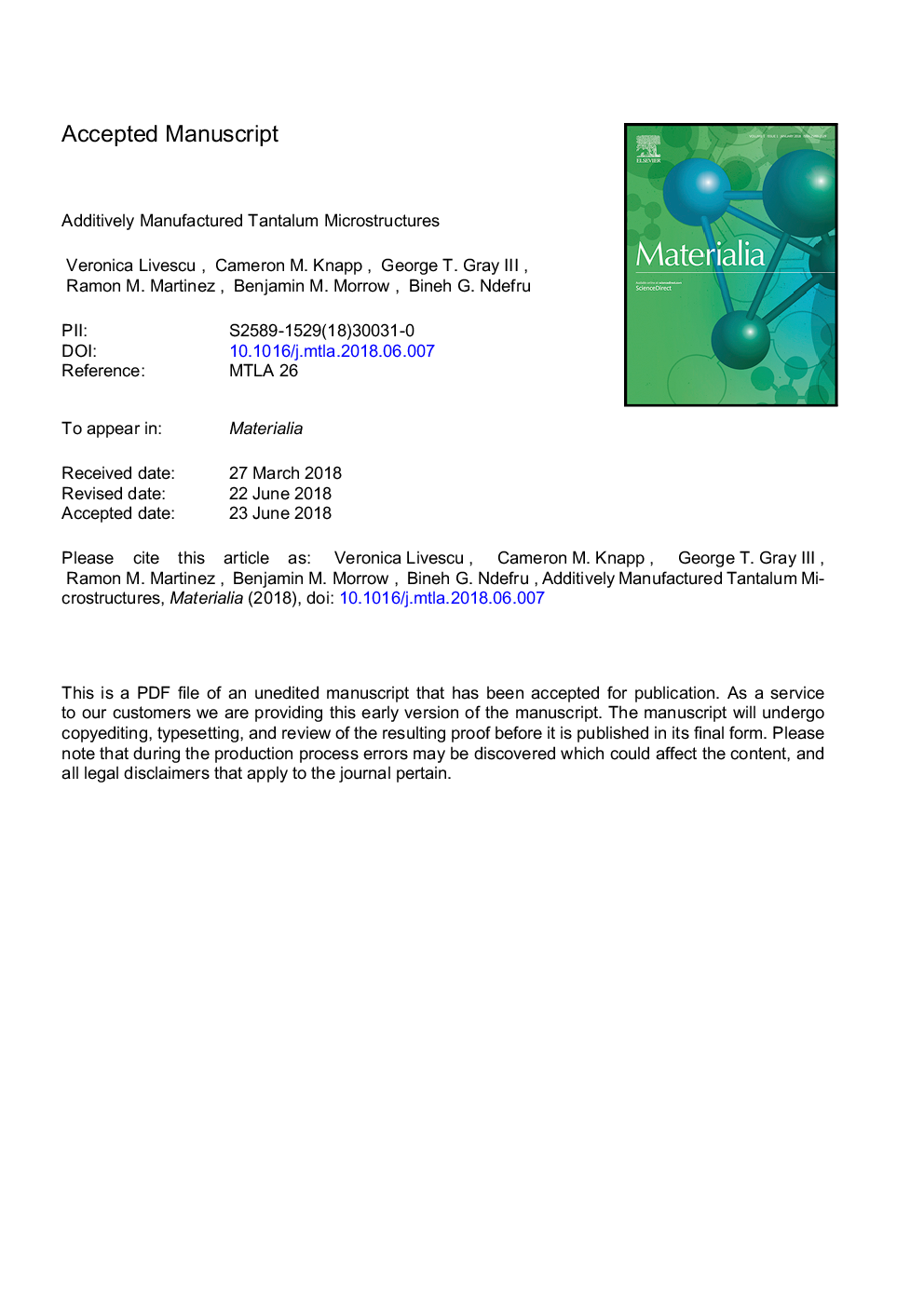| Article ID | Journal | Published Year | Pages | File Type |
|---|---|---|---|---|
| 8966258 | Materialia | 2018 | 31 Pages |
Abstract
Additively manufacturing tantalum is a challenging process in which obstacles are stemming from the high melting temperature and susceptibility to oxidation of tantalum. Several combinations of deposition parameters were considered in an effort to obtain fully dense additively manufactured tantalum produced on an EOSINT M280 DMLS system. Deposition parameters significantly affect the resulting microstructure of additively manufactured tantalum, altering grain morphology, grain size, crystallographic preferred orientation, and deposition porosity. Due to the nature of the laser sintering process applied, which implies large directional temperature gradients, the resulting microstructures were strongly columnar along the building direction. Microstructural differences for different deposition conditions manifested themselves in both grain morphology and preferred crystal orientations in the columnar grains. Deposition speed and laser power were important parameters to consider for obtaining porosity-free material. Stripe width had the most significant effect on grain growth.
Related Topics
Physical Sciences and Engineering
Materials Science
Biomaterials
Authors
Veronica Livescu, Cameron M. Knapp, George T. III, Ramon M. Martinez, Benjamin M. Morrow, Bineh G. Ndefru,
